The developmental and genetic bases of apetaly in Bocconia frutescens (Chelidonieae: Papaveraceae)
- PMID: 27489612
- PMCID: PMC4971710
- DOI: 10.1186/s13227-016-0054-6
The developmental and genetic bases of apetaly in Bocconia frutescens (Chelidonieae: Papaveraceae)
Abstract
Background: Bocconia and Macleaya are the only genera of the poppy family (Papaveraceae) lacking petals; however, the developmental and genetic processes underlying such evolutionary shift have not yet been studied.
Results: We studied floral development in two species of petal-less poppies Bocconia frutescens and Macleaya cordata as well as in the closely related petal-bearing Stylophorum diphyllum. We generated a floral transcriptome of B. frutescens to identify MADS-box ABCE floral organ identity genes expressed during early floral development. We performed phylogenetic analyses of these genes across Ranunculales as well as RT-PCR and qRT-PCR to assess loci-specific expression patterns. We found that petal-to-stamen homeosis in petal-less poppies occurs through distinct developmental pathways. Transcriptomic analyses of B. frutescens floral buds showed that homologs of all MADS-box genes are expressed except for the APETALA3-3 ortholog. Species-specific duplications of other ABCE genes in B. frutescens have resulted in functional copies with expanded expression patterns than those predicted by the model.
Conclusions: Petal loss in B. frutescens is likely associated with the lack of expression of AP3-3 and an expanded expression of AGAMOUS. The genetic basis of petal identity is conserved in Ranunculaceae and Papaveraceae although they have different number of AP3 paralogs and exhibit dissimilar floral groundplans.
Keywords: ABCE model; AGAMOUS; APETALA3; Apetaly; Bocconia; Homeosis; Macleaya; Papaveraceae; Stylophorum.
Figures


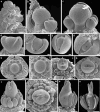

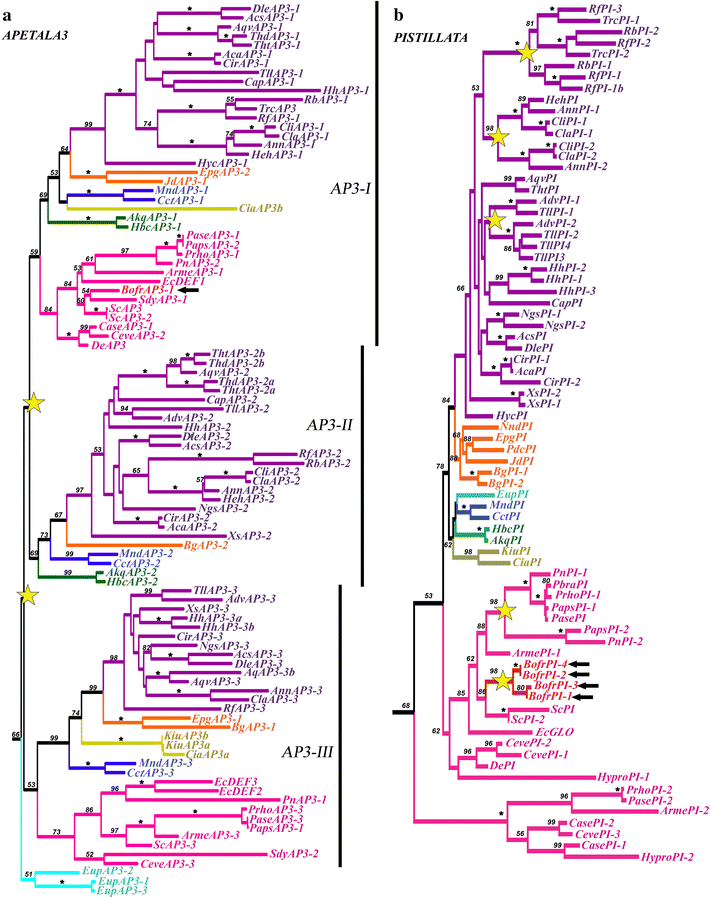
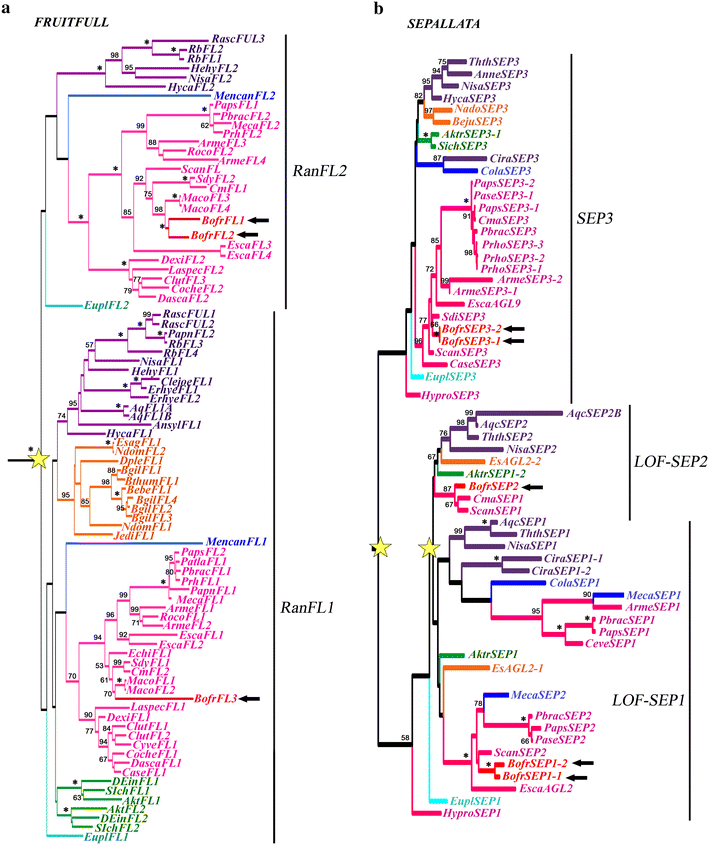

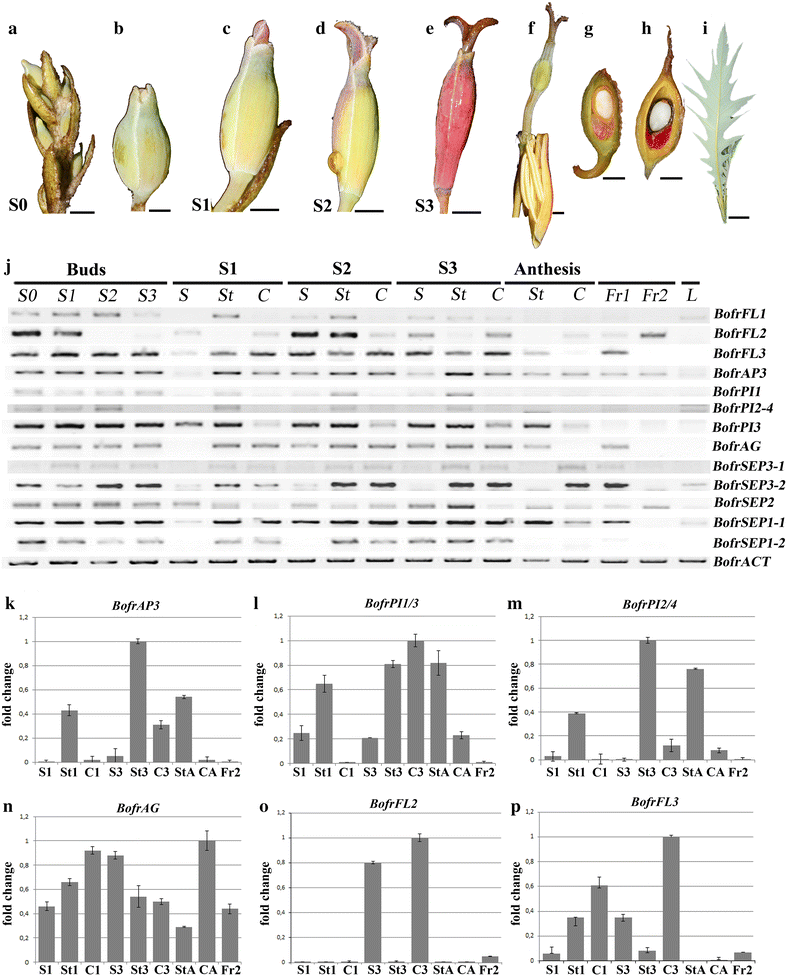
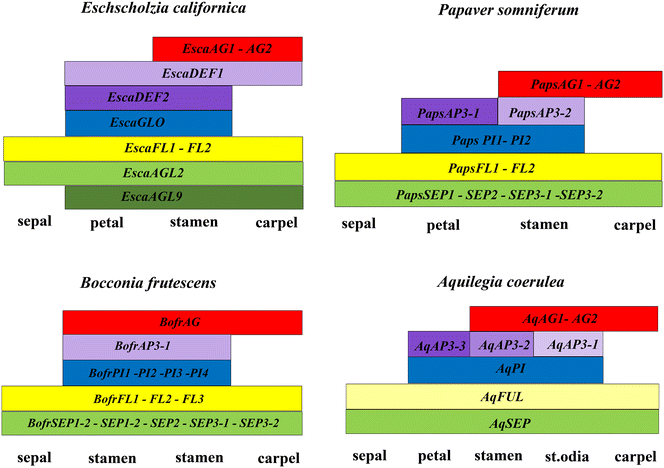
References
-
- Endress PK. Diversity and evolutionary biology of tropical flowers. Cambridge: Cambridge University Press; 1994.
-
- Endress PK. Floral structure and evolution in Ranunculanae. Plant Syst Evol. 1995;9:47–61.
-
- Ronse De Craene LP, Brockington SF. Origin and evolution of petals in angiosperms. Plant Ecol Evol. 2013;146:5–25. doi: 10.5091/plecevo.2013.738. - DOI
-
- Glover BJ. Understanding flowers and flowering: an integrated approach. New York: Oxford University Press; 2007.
LinkOut - more resources
Full Text Sources
Other Literature Sources

